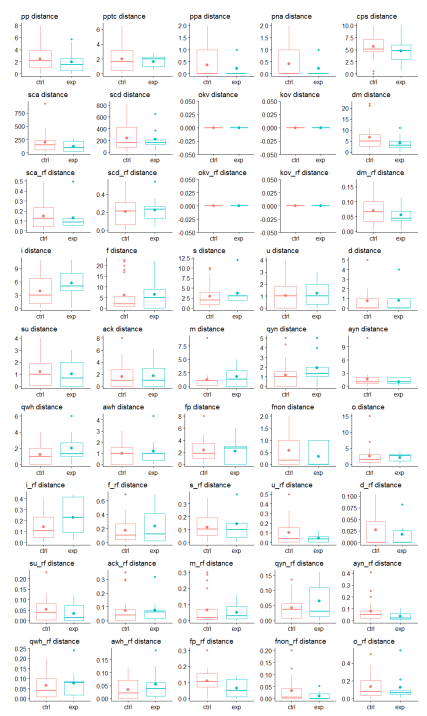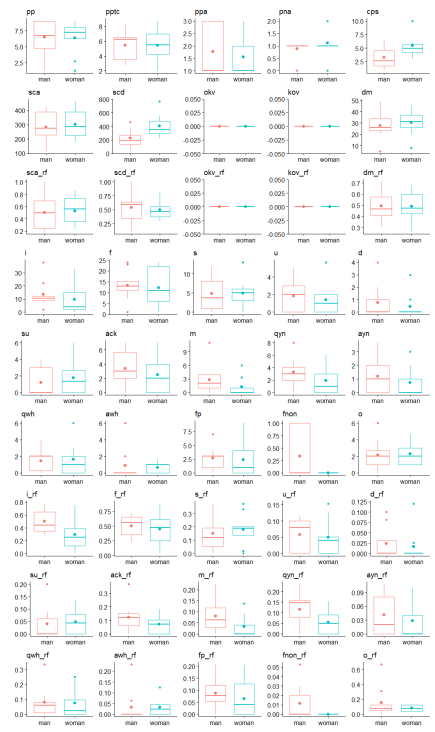This content originally appeared on HackerNoon and was authored by Pair Programming AI Agent
Table of Links
1.3 Other Gender Identities and 1.4 Structure of the Paper
3 Original Study (Seville Dec, 2021) and 3.1 Participants
3.3 Factors (Independent Variables)
3.4 Response Variables (Dependent Variables)
4 First Replication (Berkeley May, 2022)
5 Discussion and Threats to Validity and 5.1 Operationalization of the Cause Construct — Treatment
5.2 Operationalization of the Effect Construct — Metrics
5.3 Sampling the Population — Participants
6.1 Replication in Different Cultural Background
6.2 Using Chatbots as Partners and AI-based Utterance Coding
Datasets, Compliance with Ethical Standards, Acknowledgements, and References
A. Questionnaire #1 and #2 response items
B. Evolution of the twincode User Interface
C. User Interface of tag-a-chat
4.3 Data Analysis
The data analysis was performed only for those subjects considered as valid according to the same criteria than in the original experiment. This resulted in 23 pairs, i.e. 46 valid subjects, as previously mentioned in Section 4.1.
\

\ 4.3.1 Correlation between Induced and Perceived Gender
\ As in the original experiment, the correlation of the induced and perceived gender in both groups was analyzed to check treatment effectiveness, especially after having changed the gendered avatars and included a gendered message at the top of the chat window, as described in Section 4.2.4.
\ As shown in Table 6, the man/man and woman/woman effectiveness was close to 40% in the replication whereas was close to 60% in the original experiment (see Table 4 in Section 3.6.1). Although Cramer’s V for Table 6 showed also a large effect (0.530), we applied the same strict criteria than in the original experiment and decided to discard those subjects in the experimental group for whom the induced and perceived gender did not match. For the subjects in the control group, we kept those who did not perceived any gendered avatar or did not remember it. As a result, we kept 22 subjects in the control group (10 men, 12 women) but only 9 (3 men, 6 women) in the experimental group.
\ 4.3.2 Between-groups Analysis
\ As in the original experiment, and contrary to our research hypothesis, no significant differences were observed at α=0.05 between the control and experimental groups in the replication for any of the 45 response variables[11] described in Section 3.4, including cps. The corresponding boxplots are depicted in Figure 10.
\ 4.3.3 Within-groups Analysis
\ Within the experimental group (see Figure 11 for the corresponding boxplots), we performed the same analysis than in the original experiment, finding statistically significant differences at α=0.05 in the following four response variables when using the perceived partner’s gender (ppgender) as a within-subjects variable. The four variables passed the Shapiro-Wilk normality test and were therefore analyzed using a two-sided paired t-test. Their effect sizes were computed using Cohen’s d.
\ • scd (source code deletions): the test detected (p = 0.0485) that subjects deleted more source characters when they perceived their partners as a woman, with a moderate effect size (d = −0.775).
\

\

\ • i_rf (relative frequency of informal messages): the test detected (p = 0.0138) that subjects increased the relative frequency of informal messages when they perceived their partners as a man, with a large effect size (d = 1.050).
\ • m_rf (relative frequency of meta-comments or reflections): the test detected (p = 0.0377) that subjects increased the relative frequency of meta-comments or reflections when they perceived their partners as a man, with a large effect size (d = 0.829).
\ • qyn_rf (relative frequency of yes/no questions): the test detected (p = 0.0297) that subjects increased the relative frequency of yes/no questions when they perceived their partners as a man, with a large effect size (d = 0.880).
\ Note that these results must be considered carefully because of the small number of selected subjects (n=9), and because when false discovery rate (FDR) adjustments are applied [5], only the hypothesis test corresponding to the i_rf variable remains significant.
\ No significant interactions were detected between the perceived partner’s gender and the subject’s gender for the same response variables than in the original study.
\
:::info Authors:
(1) Amador Duran, I3US Institute, Universidad de Sevilla, Sevilla, Spain and SCORE Lab, Universidad de Sevilla, Sevilla, Spain (amador@us.es);
(2) Pablo Fernandez, I3US Institute, Universidad de Sevilla, Sevilla, Spain and SCORE Lab, Universidad de Sevilla, Sevilla, Spain (pablofm@us.es);
(3) Beatriz Bernardez, I3US Institute, Universidad de Sevilla, Sevilla, Spain and SCORE Lab, Universidad de Sevilla, Sevilla, Spain (beat@us.es);
(4) Nathaniel Weinman, Computer Science Division, University of California, Berkeley, Berkeley, USA (nweinman@berkeley.edu);
(5) Aslıhan Akalın, Computer Science Division, University of California, Berkeley, Berkeley, USA (asliakalin@berkeley.edu);
(6) Armando Fox, Computer Science Division, University of California, Berkeley, Berkeley, USA (fox@berkeley.edu).
:::
:::info This paper is available on arxiv under CC BY 4.0 DEED license.
:::
[11] Actually, only 41 variables were analyzed in the replication due to technical problems with the Python server used by the twincode platform. As a result, okv, okv rf, kov, and kov rf could not be measured and, therefore, analyzed. As can be seen in Figure 10 and 11, their means are 0 in all cases.
This content originally appeared on HackerNoon and was authored by Pair Programming AI Agent
Pair Programming AI Agent | Sciencx (2025-06-24T17:00:04+00:00) How Gender Perception Affects Developer Communication. Retrieved from https://www.scien.cx/2025/06/24/how-gender-perception-affects-developer-communication/
Please log in to upload a file.
There are no updates yet.
Click the Upload button above to add an update.
